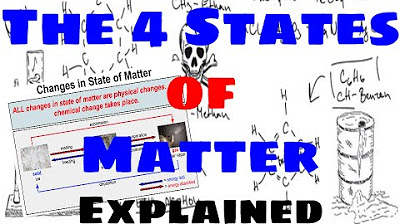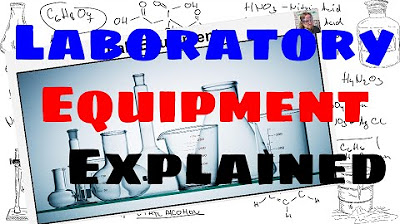Homeostasis Hugs
Summary
TLDRIn this educational video, Mr. Andersen explores the concept of 'homeostasis hugs,' a metaphor for the vital processes that maintain an organism's internal stability. He explains how countercurrent heat exchange in animals like moose and dolphins conserves body heat, and how similar 'hugs' facilitate gas exchange in the lungs and kidneys. The video also delves into the remarkable efficiency of fish gills, using countercurrent gas exchange to extract oxygen from water. These 'hugs' between tissues are essential for life, showcasing the intricate mechanisms that support homeostasis.
Takeaways
- 🤗 The concept of 'hugs' in biology refers to the close physical contact between tissues that facilitates the transfer of substances, essential for maintaining homeostasis.
- 🔥 In countercurrent heat exchange, arteries and veins 'hug' each other to transfer heat, preventing heat loss in extremities like the legs of a moose or the flippers of a dolphin.
- 🌡️ The temperature in the hoof of a moose is maintained near freezing but not so cold that tissues die, demonstrating the efficiency of countercurrent heat exchange.
- 🫁 In the lungs, alveoli are 'hugged' by capillaries, allowing for the exchange of oxygen into the blood and carbon dioxide out, maintaining the body's internal oxygen levels.
- 🧠 The nephron in the kidney performs filtration, secretion, reabsorption, and excretion, with 'hugs' between tissues facilitating the selective transfer of substances.
- 💧 The loop of Henle in the nephron is crucial for water and sodium reabsorption, highlighting the importance of tissue contact in maintaining the body's fluid balance.
- 🐟 Fish gills utilize countercurrent gas exchange, where blood flows in opposition to water flow, maximizing the extraction of oxygen from water.
- 🌊 Fish can extract up to 80% of available oxygen from water due to the efficient countercurrent exchange mechanism in their gills.
- 🔄 The countercurrent exchange in fish gills creates a gradient that allows for continuous and efficient gas exchange, even as the water becomes progressively depleted of oxygen.
- 🔬 These 'hugs' between tissues are critical for maintaining homeostasis by ensuring the proper transfer of substances like heat, oxygen, and nutrients.
Q & A
What is the main theme of Mr. Andersen's video?
-The main theme of Mr. Andersen's video is homeostasis, specifically focusing on the concept of 'hugs' between tissues that help maintain an organism's internal stable environment.
What is the analogy Mr. Andersen uses to explain the concept of 'hugs' in biology?
-Mr. Andersen uses the analogy of human hugs to explain the close contact between different tissues in biological systems, which facilitates the transfer of substances necessary for maintaining homeostasis.
How does countercurrent heat exchange help in maintaining an organism's warmth?
-Countercurrent heat exchange helps maintain an organism's warmth by having arteries and veins wrapped around each other, allowing the transfer of heat from the warmer artery to the cooler vein, thus conserving heat within the body.
In which parts of an organism can countercurrent heat exchange be found?
-Countercurrent heat exchange can be found in the legs of a moose, the feet of a bird, and the flippers of a dolphin, among other places, to help these organisms maintain their body temperature.
What is the role of the alveoli and capillaries in the lungs in terms of homeostasis?
-The alveoli and capillaries in the lungs play a crucial role in homeostasis by facilitating the exchange of oxygen and carbon dioxide. Oxygen is transferred from the alveoli into the capillaries, while carbon dioxide is unloaded from the capillaries into the alveoli to be exhaled.
What are the four main functions of the kidney as described in the script?
-The four main functions of the kidney are filtration, secretion, reabsorption, and excretion, which are essential for maintaining the body's internal environment.
How does the nephron contribute to the kidney's functions?
-The nephron, located within the kidney, contributes to the kidney's functions by filtering blood, secreting unwanted substances, reabsorbing necessary substances, and excreting waste products.
What is the purpose of the countercurrent gas exchange in fish gills?
-The purpose of the countercurrent gas exchange in fish gills is to efficiently extract oxygen from the water and release carbon dioxide. This process maximizes the amount of oxygen that can be obtained from the water, which is crucial for fish living in environments with low oxygen levels.
How does the structure of fish gills facilitate countercurrent gas exchange?
-The structure of fish gills, specifically the lamella, facilitates countercurrent gas exchange by having a large surface area with thin capillaries running in the opposite direction to the water flow. This setup creates a gradient that allows for the efficient transfer of gases.
What is the significance of the 'hug' between tissues in biological systems as discussed in the video?
-The 'hug' between tissues in biological systems is significant because it ensures close contact, which is necessary for the efficient transfer of substances like heat, oxygen, and nutrients. This close contact is crucial for maintaining homeostasis within an organism.
Outlines

This section is available to paid users only. Please upgrade to access this part.
Upgrade NowMindmap

This section is available to paid users only. Please upgrade to access this part.
Upgrade NowKeywords

This section is available to paid users only. Please upgrade to access this part.
Upgrade NowHighlights

This section is available to paid users only. Please upgrade to access this part.
Upgrade NowTranscripts

This section is available to paid users only. Please upgrade to access this part.
Upgrade NowBrowse More Related Video

The Four States of Matter - Explained

Lab Equipment - Explained

3. Gr 11 Life Sciences - Population Ecology - Theory 3 Mark Recapture Method

4. Gr 11 Life Sciences - Population Ecology - Worksheet 1

PENJASKES KELAS X - SOFTBALL

Introduction to Culture [AP Human Geography Review Unit 3 Topic 1]

Menentukan Mr ( massa molekul relatif )
5.0 / 5 (0 votes)